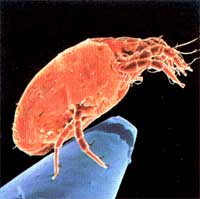 What is the value in avoiding dust mites and increasing omega-3 fatty acids in a child’s diet — especially in children at high risk of developing asthma because of a family history? Lots of research has gone on down under to answer this question. It’s part of the CAPS trial (Childhood Asthma Prevention Study).
What is the value in avoiding dust mites and increasing omega-3 fatty acids in a child’s diet — especially in children at high risk of developing asthma because of a family history? Lots of research has gone on down under to answer this question. It’s part of the CAPS trial (Childhood Asthma Prevention Study).
Here’s what we learned
More than 600 children at high risk of asthma and allergy were followed for 3 years. One group had efforts to reduce exposure to dust mites and increase omega-3 supplementation, while the other group did not. After 18 months, parents of children in the treated group thought there was less wheezing. But objective measures such as serum IgE and atopy did not differ. And neither did the doctors’ diagnosis of asthma.
Evaluation at the age of 5 years revealed that dietary supplementation with omega-3 fatty acids had a reduction in the prevalence of cough. Sensitization to dust mites was also decreased. That’s good as far as it goes, but there was no difference in wheezing.
Hmm, what’s the problem here?
According to the Australasian Society of Clinical Immunology and Allergy (ASCIA) most of the available allergy prevention strategies are relatively crude and have small effects at best. For example, in this study there was only a 61% reduction in mite allergen concentrations.
Despite these findings, the CAPS researchers believe that asthma can be prevented. “However, the most effective, practical forms of early life environmental modification and the circumstances under which it will be appropriate to implement them remain to be established.”
8/3/06 16:04 JR